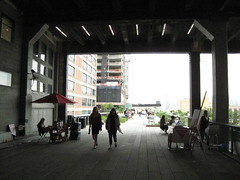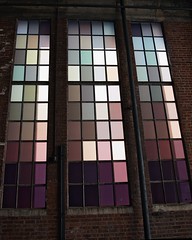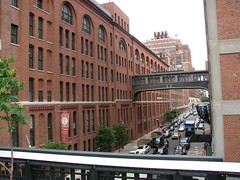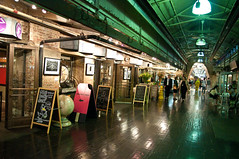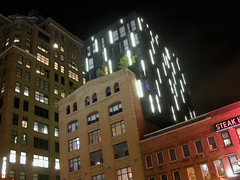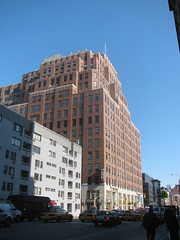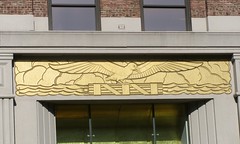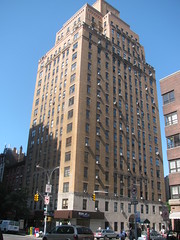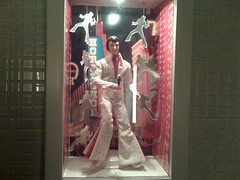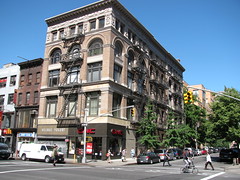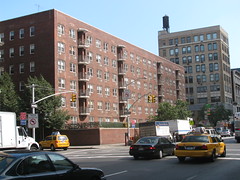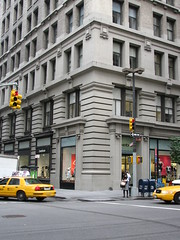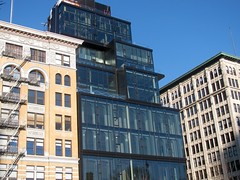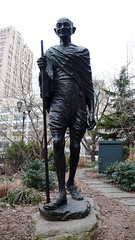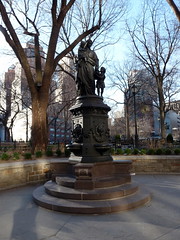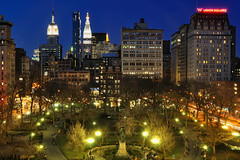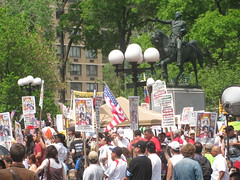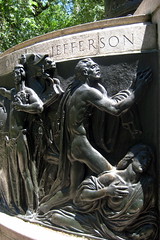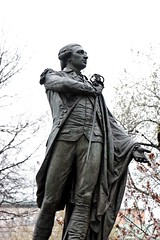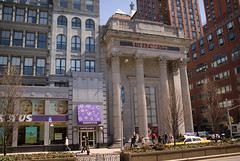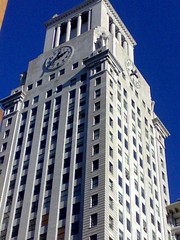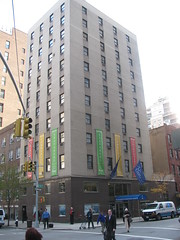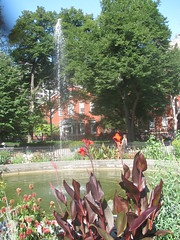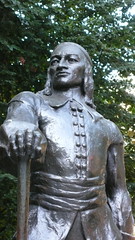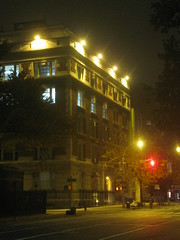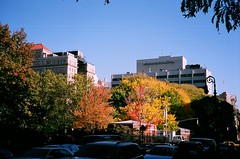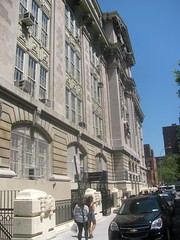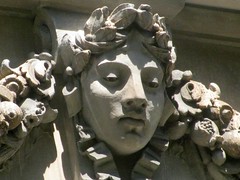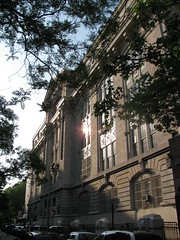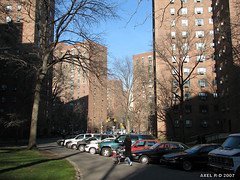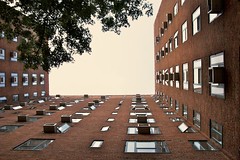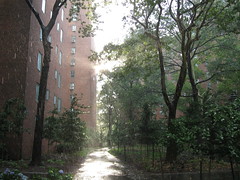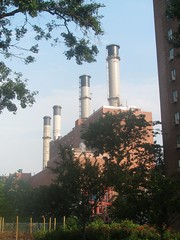South:
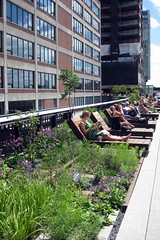
Bridging the street here is a disused elevated railroad that was used to transport
freight along the Westside waterfront, replacing the street-level
tracks at 10th and 11th avenues that earned those roads the
nickname "Death Avenue." Built in 1929 at a cost of $150 million
(more than $2 billion in today's dollars), it originally
stretched from 35th Street to St. John's Park Terminal,
now the Holland Tunnel rotary.
Partially torn down in
1960 and abandoned in 1980, it now stretches from Gansevoort almost to 34th--mostly running mid-block, so built to avoid
dominating an avenue with an
elevated platform. In its abandonment, the High Line
became something of a natural wonder, overgrown with
weeds and even trees, accessible only to those who risked
trespassing on CSX Railroad property.
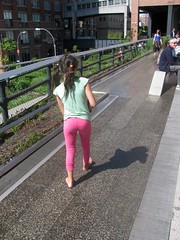
In 2009 it was
opened to the public as New York City's newest park; it truly
transforms its neighborhood and hence the city. This
stretch of it includes the Sundeck Water Feature, giving parkgoers an opportunity to sunbathe and wade barefoot.
450: Milk Studios Building is an
8-story brick building from 1936, once part of
the Nabisco complex. It's named for Milk Studios
& Gallery, which has done cover shots for
Vanity Fair and Vogue and is also a
noted event space. Also in the building is
Phillips de Pury & Co., world headquarters of
an auction house founded in 1796 by Harry Phillips,
(senior clerk of James Christie), and merged in 1999
with the Zurich-based art gallery de Pury & Luxembourg.
Phillips has held auctions for Marie Antoinette, Napoleon and
Beau Brummel, and is the only house to have conducted
an auction at Buckingham Palace. Also home to the luxury retailer Jeffrey.
440:
CECO, "the only full-service rental facility
in New York catering to the commercial, film, and television
production communities."
436: Passerby, unmarked art-scene
bar that's home to Toby Cecchini, who invented the
modern Cosmopolitan (and wrote a bartending
memoir of the same name).
418:
Wooster Projects was Baumgartner Galleries
410: The Sound Lounge, home of
Compound Sound.
408: Site of the Crisco Disco, a late 1970s-
early '80s dance club. The character "Flash"
in the Blondie song "Rapture" is supposedly
based on a coke dealer who worked out of here.
406: The adddress of
10-year-old Gracie Budd, who in 1928 was
abducted and killed by serial killer
Albert Fish.
404 (corner):
Prince Lumber,
an honest-to-God lumberyard
| 




